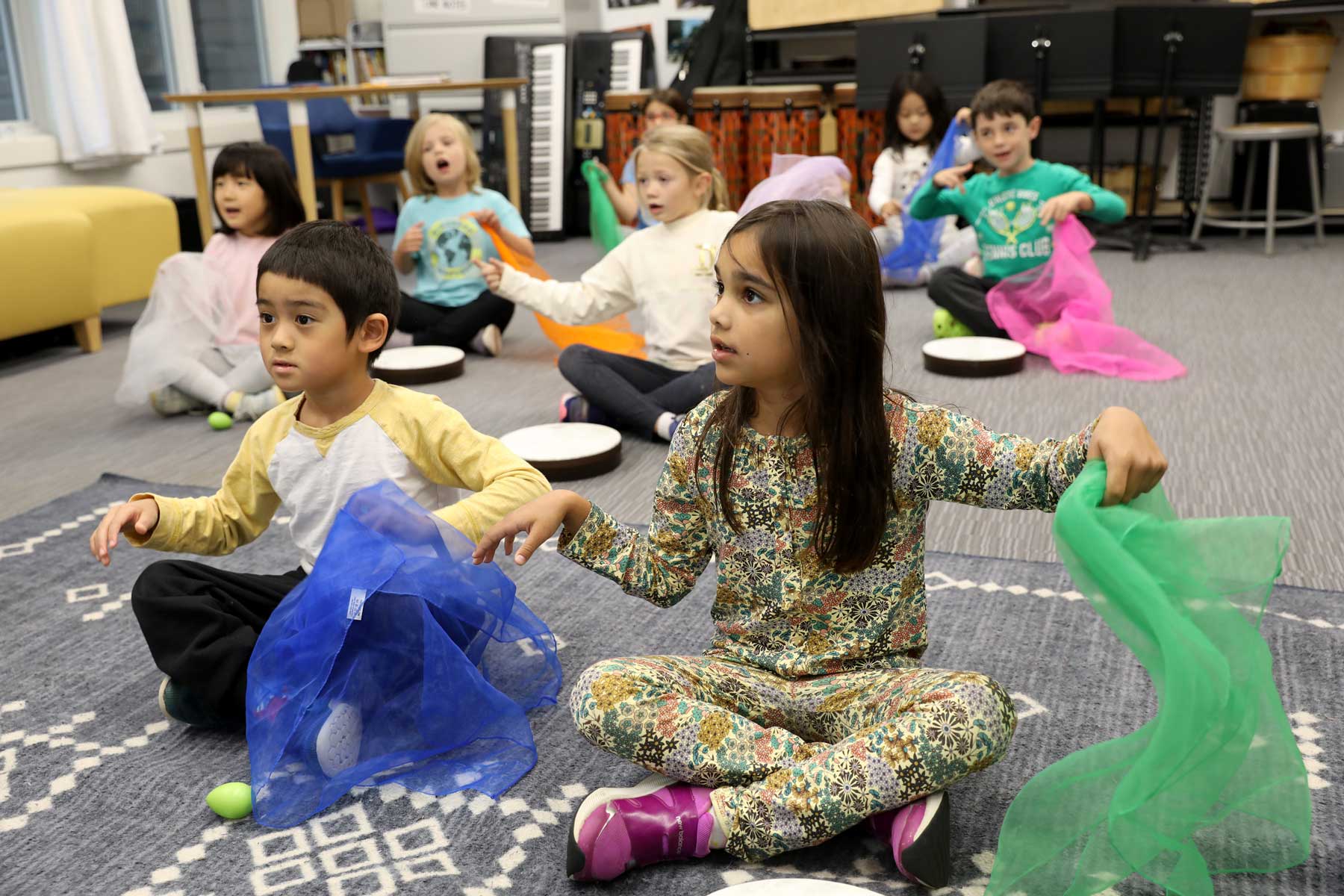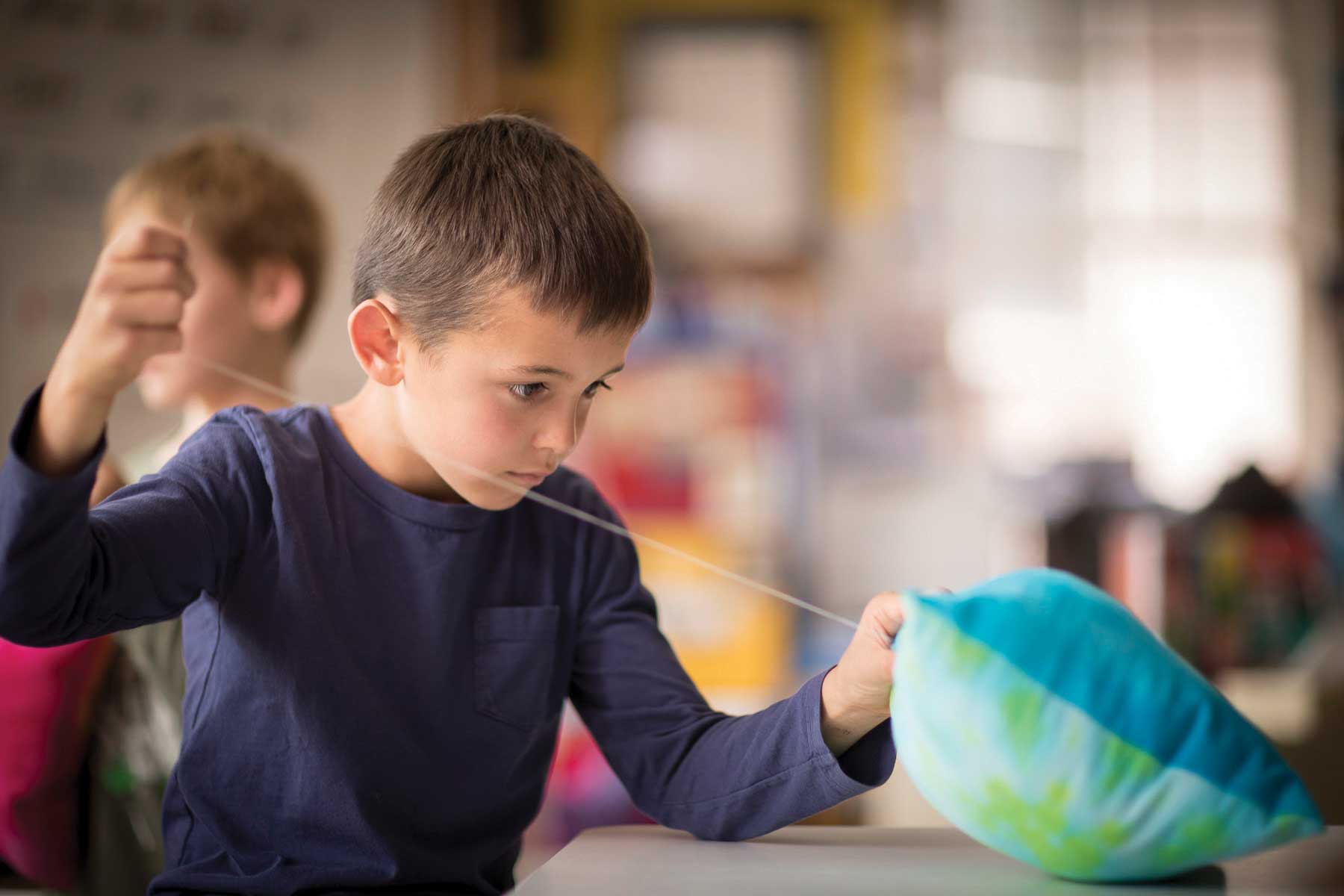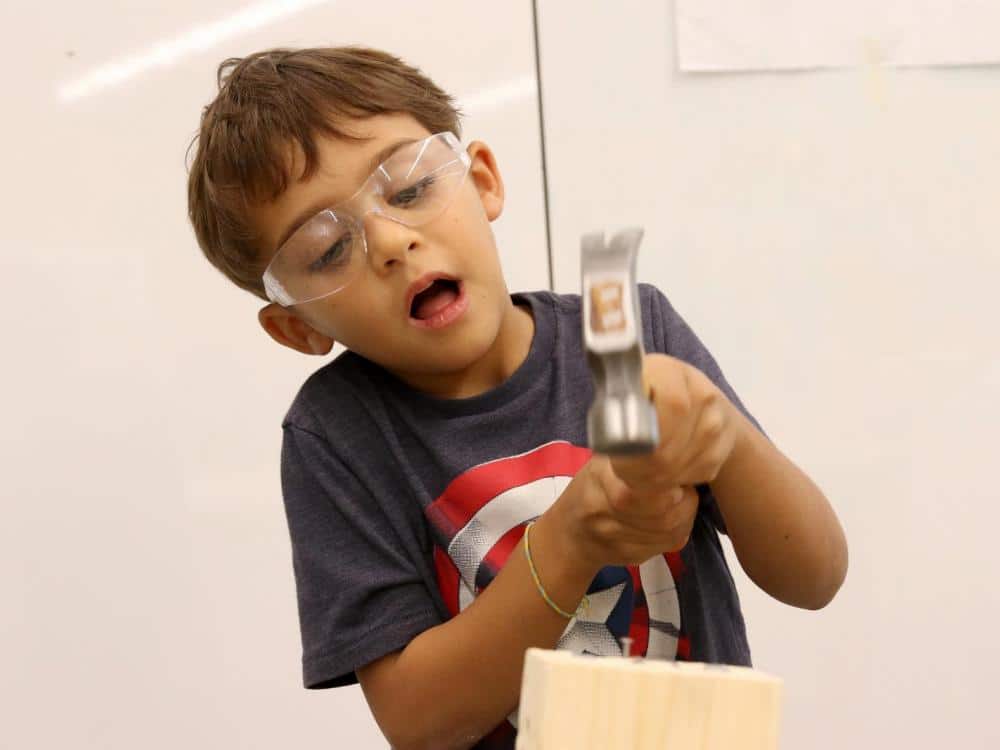
Creating independent readers and instilling a love of reading and literature are primary goals in the first grade. The reading program focuses on explicit phonics instruction, learning to read sight words, increasing vocabulary, and improving comprehension using leveled texts. The students practice reading and spelling the sight words and are exposed to new vocabulary. Read-aloud books are used to make predictions, enjoy words, notice correlation between text and illustration, explore a variety of genres, and to share our admiration for authors and ideas.
First grade students see themselves as authors who can write confidently and creatively. Writing workshops begin with mini-lessons on grammar, mechanics, or style. Students learn how to plan and draft a story, how to have a writing conference with a teacher, how to edit and revise, and how to produce a final piece of writing to be published both in a traditional book and electronic form. We use Handwriting Without Tears to encourage legibility, correct pencil grip, and efficient letter formation.
Reading
Our first grade students will:
- participate in shared reading activities
- recognize sound-symbol correspondence
- use multiple strategies to make sense of unfamiliar words (decoding, context clues, and sentence structure)
- self-correct when reading does not make sense
- recognize sight words in the environment and in text
- retell information contained in text with accuracy and detail
- organize and sequence story events
- identify main ideas
- predict and confirm outcomes
- differentiate fact from opinion
- compare and contrast information
- understand story elements: setting, main characters, problems, solutions
- sustain silent reading
Writing
Our first grade students will:
- develop early literacy concepts in the area of writing (spacing, directionality, and letter formation)
- view themselves as authors
- express themselves clearly and confidently through writing
- understand that good writing is an ongoing process consisting of planning, drafting, revising, editing, and publishing
- use the mechanics of writing (e.g., grammar, punctuation, usage, spelling) in order to construct meaning to expand vocabulary
- contribute to class stories and shared writing
- use known sight words in their writing
- apply knowledge of sound-symbol correspondences to spell unknown words
- write personal narrative, poetry, formal letters, and fiction
- generate ideas
- organize and sequence ideas for writing
- share writing and receive feedback
- incorporate suggestions from peers and teachers
- create and publish an eBook
Speaking and Listening
Our first grade students will:
- use active listening
- listen for specific information
- develop strategies for retaining oral information
- follow verbal instructions: simple and multi-step directions
- demonstrate clear and logical reasoning through oral expression
- develop appropriate articulation and modulation
- practice sharing ideas and work
- develop appropriate ways to interact and communicate with others
- demonstrate understanding of modes of verbal communication: question vs. answer, storytelling vs. instruction, etc.


























